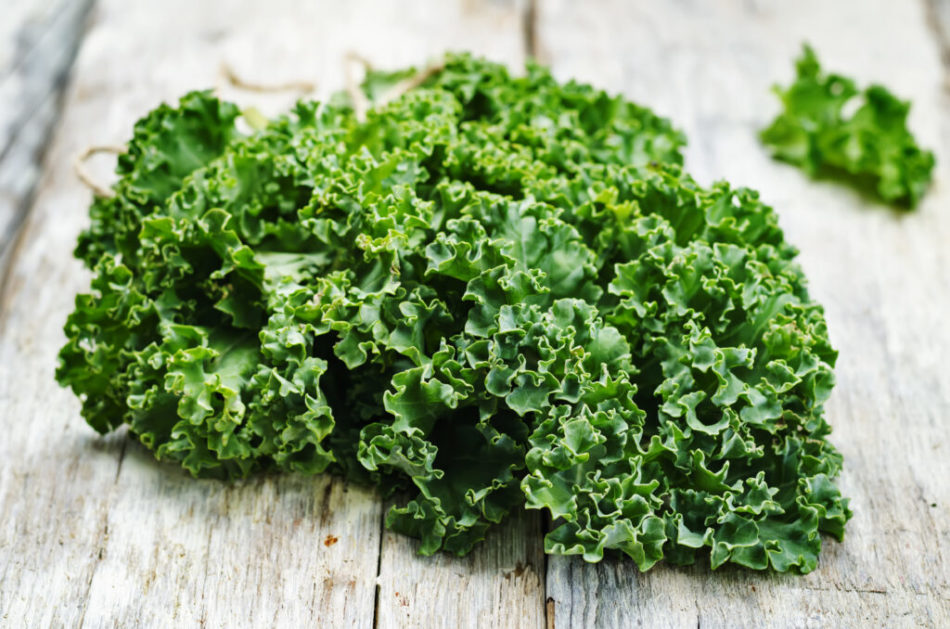Freezing veggies – especially the green ones – slowly becomes as popular as freezing fruits. We’ve already talked about freezing spinach and dock, and today, we’ll share a bit about freezing kale.
Freezing kale: green is in trend
Although kale was well known and appreciated since time immemorial, Poles rarely used it for purposes other than decorative. It is gaining more popularity nowadays, as it’s recommended in a variety of fit diets. Having it become a part of one’s daily diet makes it easy to freeze some to have on hand for later.
Kale has a lot in common with… cabbage and broccoli. It’s packed with antioxidants and as such, helps us protect ourselves from cancer (prostate, lung, colon, breast ones); it also hinders harmful oxidation processes.
It helps our bodies detox, slows down breast, ovarian, colon, and liver cancers. The benefits don’t stop here – kale is packed full of nutritional substances. It contains vitamins C, B6, A, thiamin, riboflavin, niacin, and folic acid. And let’s not forget about minerals: calcium, iron, magnesium, phosphorus, potassium, and zinc.
Who is kale good for?
Kale should be included in the diet of all those struggling with heart conditions. Because of their composition, this particular vegetable aids our cardiovascular systems and can help lower our pressure. Vitamin C (and only peppers and parsley have more of it) seals and strengthens blood vessels. It also stops the oxidation of harmful cholesterol and prevents iron deficiencies from occurring.
Because it contains oxolates, those suffering from oxolate urolithiasis should avoid eating kale. Goitrogens can make the excess of kale in one’s diet lead to the dysfunction of the hormonal synthesis in the thyroid or cause an overgrowth of the thyroid gland.
How to eat kale
There are many ways to prepare kale. Like spinach, it can be roasted or blanched. It can be served as a side to dishes with rice or pasta. It’s perfect in salads and green smoothies. And when baked, it’s an awesome replacement for potato chips – for all those who mind their diet!
Freezing kale – where to begin
The season for kale starts in fall and lasts throughout winter. Young leaves are tasty and crisp. They’re best after freezes – kale can handle temperatures reaching -15 degrees Celsius.
If you’re harvesting with the intention of freezing kale, make sure you select green, undamaged leaves. It’s necessary to remove all marcid and unhealthy ones as they can impact the rest of your harvest.
The next step is to wash your kale thoroughly. You can add a bit of vinegar to water – it will help remove the dirt. Next, dry the leaves – you can use a strainer or paper towels. When ready, rip the leaves off their stems and make sure they’re divided into smaller pieces.
The next step is blanching your kale.
Put the leaves in boiling water for about a minute. It’s best to use a strainer or a skimmer for this purpose. After blanching, you need to leave your kale so that the water can drip off entirely. You can safely leave it in the strainer or a sieve for 1 or 2 hours to make sure all water is gone.
The whole process is almost identical as in the case of freezing spinach or dock.
Tested methods for freezing kale
When all of the steps above are completed, we can proceed with freezing.
There are a couple of ways for freezing kale:
Method one
Place your cut leaves in plastic bags and remove as much air as you can. Place the packets in your freezer.
Method two
Use muffin molds. The best ones for this purpose are made of silicone since it’s easy to remove products from them.
After pre-freezing in the molds, you can use bigger containers (ice cream boxes, etc.).
Method three
The last method calls for blending or stewing your kale. Prepped in such a way, your kale will be perfect for smoothies or shakes!

Thawing kale
How to thaw kale?
Thawing kale requires no prior preparations. Batches that are taken out of your freezer can be thrown directly into a pot or a pan; the only thing you need to do is wait until the leaves return to their initial form.
When picked up in a good moment, prepped, and frozen well, kale can become not only a wonderful addition to our daily diet; it’s also a perfect source of vitamins and minerals. We do hope our guide on freezing it can make the preparations of this delicious snack easier for you!

